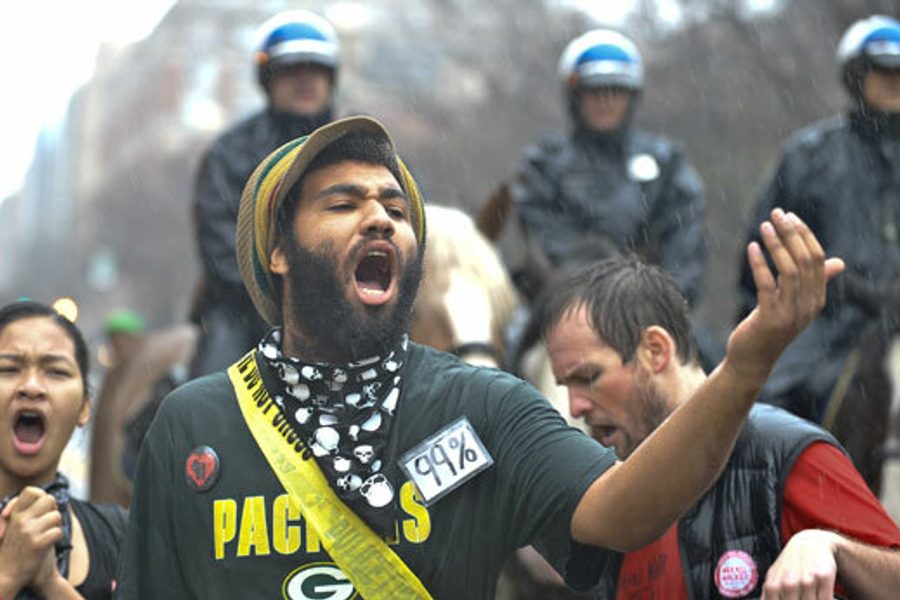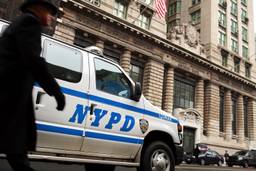
Since being evicted from parks across the country, Occupy Wall Street has been largely forced “underground,” which may be advantageous for the group in the long run. Sitting in a park and awaiting imminent police raids, while initially constructive, had started to border on the repetitive and fatalistic. Camp, raid, jail. Camp, raid, jail. For police, destroying the order of Occupy was akin to shooting ducks in a barrel. But now, by dispersing from parks and splitting the movement into direct action cells, such as the one that just reclaimed a home in East New York, occupiers have forced police to try and hit multiple moving targets.
When I recently interviewed activist and writer Tim Wise about Occupy, he confessed about having some initial reservations about a male-dominated group of majority white, college-age students purporting to represent “the 99 percent.” However, as Occupy evolved, so did Wise’s attitude about the movement. In places like Oakland, Detroit, and Birmingham, Occupy activists have joined forces with struggling people of color to combat some of the more barbaric state policies affecting minorities.
“I’m not saying it’s good that the public park sites were closed and disbanded by cops. It’s not good. But, now, there’s an opportunity for Occupy folks to be sort of, it’s not really underground, but it’s sort of like, hey, you don’t know where we’re going to show up tomorrow. We could show up at your house. We could show up at Bank of America. We could show up at Citibank. We could show up at a house that’s going to be foreclosed. There is a multiplicity of options now that are starting to emerge,” said Wise.
I would argue that the movement has largely moved underground simply because there is no longer a constantly centralized, visible face to Occupy, and for the sake of its longevity, that’s a good thing. Moving underground has allowed Occupy to become more ubiquitous and malleable. It was this kind of mobility that allowed protesters to occupy the halls of the Capitol and secure awesome video of representatives literally running away from their constituents.
The flip-side to Occupy losing the cohesion and organization of the General Assemblies is now the movement stands ripe for co-option. When I spoke with Charles Davis, an independent journalist and Occupy DC participant, he expressed concern that groups like the SEIU and Moveon.org have already attempted to hijack Occupy in order to solely target the GOP and to support President Obama’s jobs program.
Technically speaking, all Occupy actions are still supposed to be approved by the GA, but Occupy DC is a great example of how the system can gradually be infiltrated by outside forces. In DC, the action committee was granted autonomy by the GA to approve or reject actions on its own without ever having to come back and reach consensus with the group. Essentially, about a dozen people were given permission to speak on behalf of the hundreds of Occupy DC members, and these dozen individuals formed the partnership with the SEIU and Moveon.
Such is the danger of foregoing Occupy’s sometimes painfully slow GA process for the sake of Spokes Councils or direct action committees. Yes, a tailored process may permit the group to move more efficiently, but investing too much power in a handful of individuals also opens the door to a DC-type hijacking. Davis explained that DC is different from other cities in the sense that the culture means people don’t see a problem with people professionally involved in politics.
“I think many see it as a plus,” he said. It was Davis who first pointed out that at least three SEIU staffers participated in one of DC’s action committee meetings, and only one identified himself as such.
“I also saw Adam Green, the co-founder of the Progressive Change Campaign Committee (PCCC), which is explicitly partisan and styles itself as a more progressive version of the DCCC. No one seemed to care that he was providing input on how to protest the DCCC. Even though I of course agree we should do that, I think it’s obviously a conflict of interest given the guy is fighting with the DCCC for campaign money,” said Davis.
Occupy is in a unique phase right now as it attempts to maintain the People’s Congress while simultaneously empowering direct action cells to do things like reclaim foreclosed homes on behalf of needy families. The evolution has managed to peek the interest of traditional media like TIME magazine, which devoted an article to the division of labor, following the publication’s decision to rank Occupy as the number one story of the year.
The juggling act will be maintaining that which makes Occupy so tremendously powerful, it’s unrelenting devotion to direct democracy, with an ability to surprise and unnerve officials and society’s elite via direct action cells.




